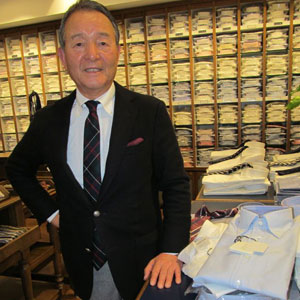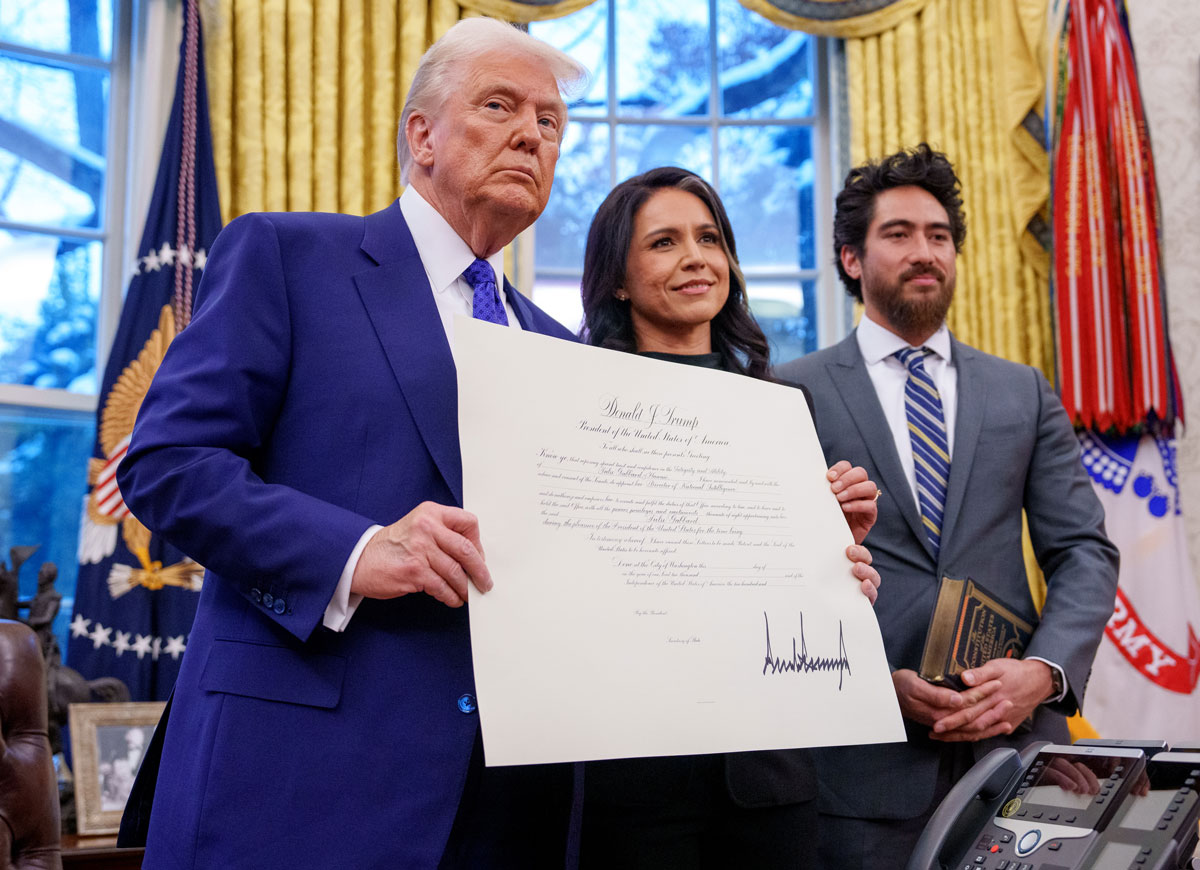Yoshio Sadasue Interview On Kamakura Shirts, American Style
Yoshio Sadasue started his Japanese brand, Kamakura Shirts, in 1991 and opened the first store, with his wife Tamiko, two years later. Today, there are 23 Kamakura Shirts stores throughout Japan, and Sadasue recently celebrated the one year anniversary of the company's first U.S. location. The Madison Avenue flagship is a dream come true. "This store was exactly what I wanted," Sadasue told Uinterview exclusively. "I reached my dream fruitfully, and it was a long way to get to New York since I started working in the fashion industry."
Sadasue's vision for Kamakura Shirts has always been to portray the classic Ivy League style and offer the highest quality of clothing and customer service matched with affordable prices. From 1966 to 1978, Sadasue learned prep fashion working for VAN Jacket, the brand that populaized the style in Japan. "The people in Japan recognized the American lifestyle and the American prosperity at that time so we envied this very much," said Sadasue.
What tips does Sadasue have for customers looking to buy quality shirts and ties? "The tie should be handmade. A handmade tie can withhold greater tension twisted then machine-made ties," Sadasue told Uinterview. "Buy a shirt with a non-fusible cotton lining. It's soft and fits well around the neck."
I worked for VAN Jacket for 12 years when I was 25 years old, from 1966 to 1978. I learned a lot about the American Ivy League style from this company. This company, VAN Jacket, is very famous in Japan. VAN introduced the Ivy League fashion to Japan after World War II. The people in Japan recognized the American lifestyle and the American prosperity at that time, so we envied this American lifestyle very much. The Japanese people had no real fashion at that time and they were so frightened about bringing in Ivy League style from New York and from the United States. VAN, unfortunately, went bankrupt in 1978 but during my time working there, I was a member of the Ralph Lauren project. This project introduced to the Japanese market how to operate and make Ralph Lauren's business successful in Japan. So I know the Ivy League style very well from VAN and from Ralph Lauren's designs and his philosophy.
This store was exactly what I wanted. I felt happy and felt like, 'I got it!' I reached my dream fruitfully and it was a long way to get to New York since I started working in the fashion industry. So I felt happy to see the store. This is the most difficult place for the men's fashion business, New York, in the whole world, and I felt I would try to conquer the New York market through this store.
Of course, this statement is true, in New York — and elsewhere in the world. They're trying to elevate to new levels in their business, and they know that clothing is a very powerful weapon in business. And, of course, they have a discerning eye for quality and they can recognize our clothing's quality and the craftsmanship immediately. That's my opinion of the New Yorker.
In New York, they care about how people are 'seen.' That's why quality and simplicity are so important. On the other hand, people in Japan care about themselves and not how others view them. Personal convenience is placed above fashion and quality. These are two different styles or opinions on fashion.
Our store opened in 1993 in Kamakura City, a small store on the second floor of a convenience store. Our business expanded along with customers' needs and wants. We never wanted to get rapid growth intentionally. We just followed the customers’ desires and wants. So our rapid growth is because of the customers’ support. We had no intention of expanding our business so rapidly but naturally, we grew. We do fixed, reasonable prices matched with high quality and great services. That is the simple reason we can expand at a fast pace.
We started the Vintage Ivy-style series, an ode to the spiritual time of the 1960s. We could create new customers through this series. There are older guys who long to be reunited with the fashion of the prime time of their lives. They want to get back to their young ages, and they can have the experience of these times of their lives. When they wear our Vintage shirts, they will feel that they can get back to their young ages at heart. So, we can create new customers this way. I wear our Vintage Ivy shirts all the time.
The tie should be handmade. A handmade tie can withhold greater tension when twisted than machine-made ties. Handmade ties can get back to the original form very easily and quickly. Our ties are all handmade.
Find a shirt that uses non-fusible cotton lining. We use non-fusible cotton lining, and it's soft and fits well around the neck. That's the reason we use it. Non-fusible cotton lining is very difficult to sew so other companies cannot use it, instead they use fusible lining because it is much easier to sew. But we resist this trend and use cotton lining for the soft feeling on the skin.
The first time I intended to open our store in New York, I thought that people would think, 'How come you came to open a store in New York? Japanese do not understand Western clothing.' But we opened our store and New York loved it very much. On our one-year anniversary I went to New York again and I found that the customers loved our store even more than when it first started. And that was very unexpected. I was delighted.
RELATED ARTICLES
Get the most-revealing celebrity conversations with the uInterview podcast!








Leave a comment